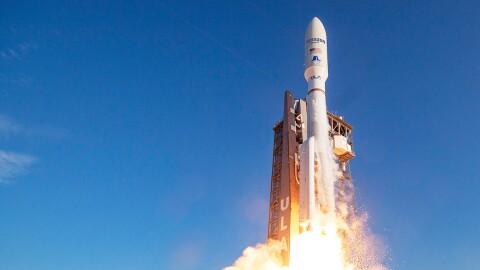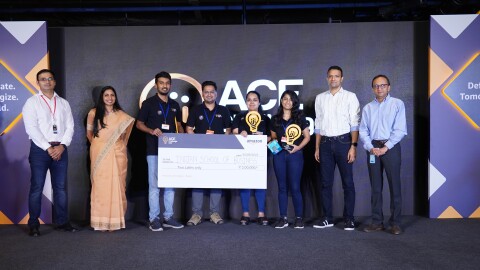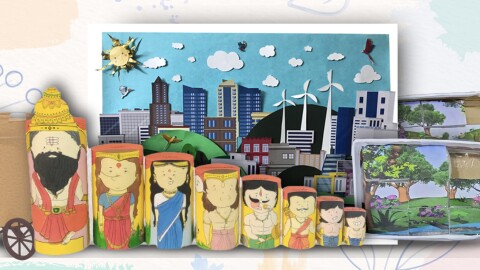It was a night that celebrated Science. As Indians stayed up the night glued to their TV sets waiting for the Vikram Lander to make the soft landing on the Moon, it was with a collective sigh of angst mixed with hope that they heard the ISRO chief K. Sivan, the director of ISRO, say these words at MIssion Control, "Vikram Lander descent was as planned and normal performance was observed up to an altitude of 2.1 kilometer. Subsequently the communications from the lander to the ground station was lost. The data is being analyzed."
As the tense moments played out and the reality sunk in that India lost contact with the Vikram Lander, reactions from the common Indian showed clearly that India has not lost hope in ISRO. We are still celebrating Chandrayaan 2, our lunar mission that dared to go to the Moon's south polar region, which had not been done before. Space is hard and our scientists dared to do the difficult which is why India celebrates them with pride and honour, and places its trust in them for the journey of exploration of space.
A brainchild of Indian Space Research Organisation (ISRO), the mission took place on 22d July from Satish Dhawan Space Center, Sriharikota in Nellore District of Andhra, using the powerful GSLV Mark III rocket. Named after the father of the Indian Space Programme – Vikram Sarabhai, the missions’ lander is called – Vikram. The launch came just days after the 50th anniversary of the historic Apollo 11 mission that landed humans on the Moon.
Chandrayaan-2’s most spectacular selling point is that it costs less than a Hollywood movie. While Christopher Nolan’s Interstellar was made on a budget of $165 million (close to INR 1,062 crore), this lunar mission was carried out at a cost of INR 978 crore.
Very special launch
This launch is monumental for a number of reasons, including the fact that, for the first time in Indian history, a space mission is spearheaded by two women. Chandrayaan – 2 is a ‘woman power’ mission led by two women scientists. Breaking all stereotypes, Project Director Muthaya Vanitha and Mission Director Ritu Karidhal together are spearheading a path-breaking journey into India’s biggest scientific venture.
Muthaya Vanitha has been awarded by the Indian Aeronautical Society and has been working with ISRO for the past 32 years. She will be in charge of all data related aspects of the flight – from data transmissions to information on the positioning of the spacecraft, the orbit and more! Ritu Karidhal, an award winning scientist is an aerospace engineer and is helping with the navigation of the spacecraft. Ritu Karidhal is fondly called ‘Rocket Woman of India’. She shot to fame after becoming the deputy operations director for the Mars Orbiter Mission and received the prestigious ISRO Young Scientist Award in 2007 from APJ Abdul Kalam in 2007.
Leadership aside, did you know that 30% of the workforce behind Chandrayaan – 2 comprise women? As the country celebrates this proud moment, people are also praising the women force behind the success of this mission, especially the ace women scientists who made this mission possible, after dedicating years of hard work.
India’s second date with the moon
India's Chandrayaan-1 made headlines around the world when it discovered the presence of water molecules and ice in the lunar soil. This moon-boggling discovery created a buzz in the space community and India wanted more.
India’s second mission to the moon will contribute to the better understanding of the most unexplored area of the moon – the South Polar Region. The mission will map the lunar surface and explore discoveries that were made by Chandrayaan – 1 which includes presence of water molecules and soil composition.
Bonded with the moon
As the mission aims to foster a sense of discovery, increase our understanding of space and inspire future scientists, for an Indian the moon is an integral part of their lives. So, even though the Gregorian calendar is what the world follows, Indians very seamlessly follow the lunar one too. Besides, the moon and its waxing figure guides us through the month until it is whole - so Amavyasa and Poornima are phases that you will see very commonly used by people when they talk about moon phases.
Our love for the moon has been professed in form of poetry from ages ago in films, poetry, ghazals, and even lullabies. So, while the song chaudhawi ka chaand is used to describe an epitome of beauty, chanda mama is that friendly uncle who makes an appearance in lullabies and helps kids doze off into a sound sleep!
The moon is thus is very special to us. And to see that the Earth's only natural satellite, our very own Chandrama is now the place where an Indian orbiter is circling, information from which will help humanity makes every Indian's heart swell with pride. Thank you ISRO...you have showed a young generation why science can be so exciting.












